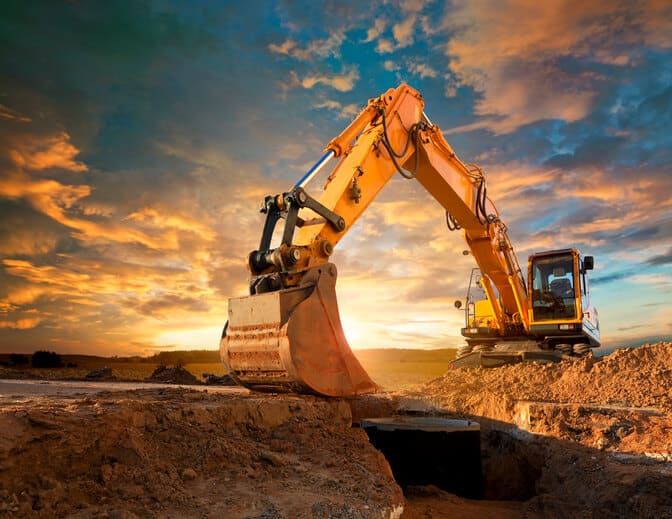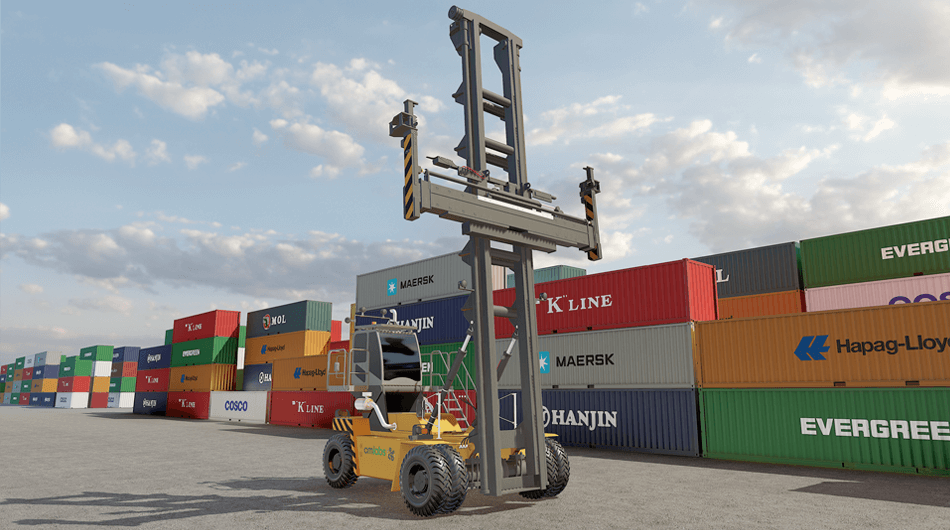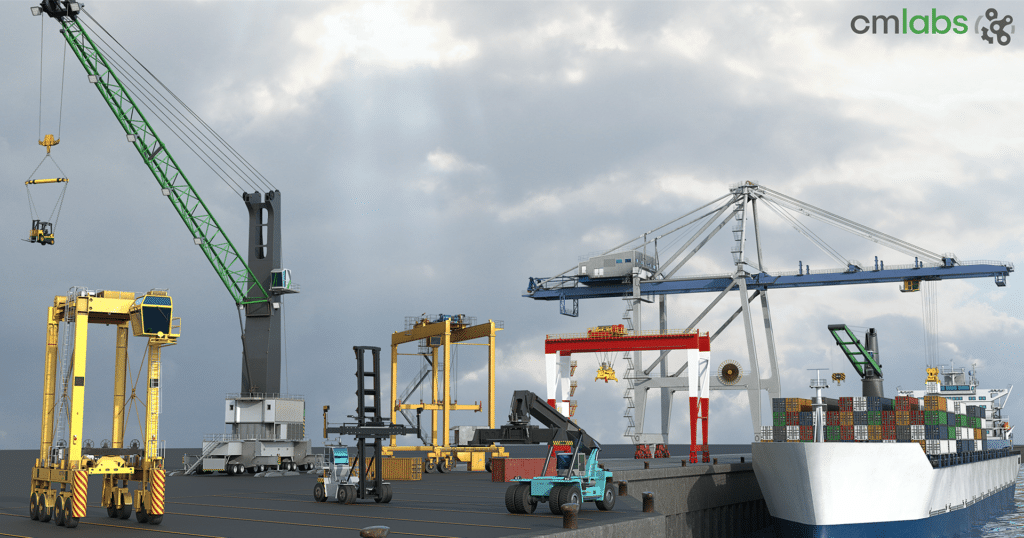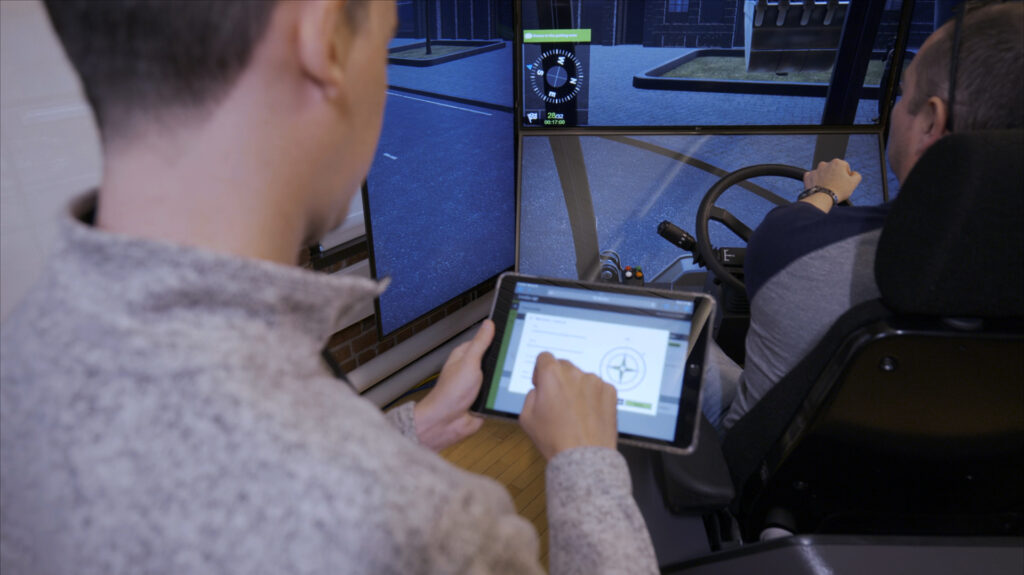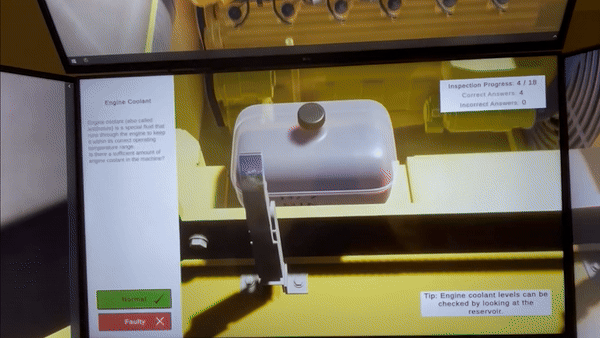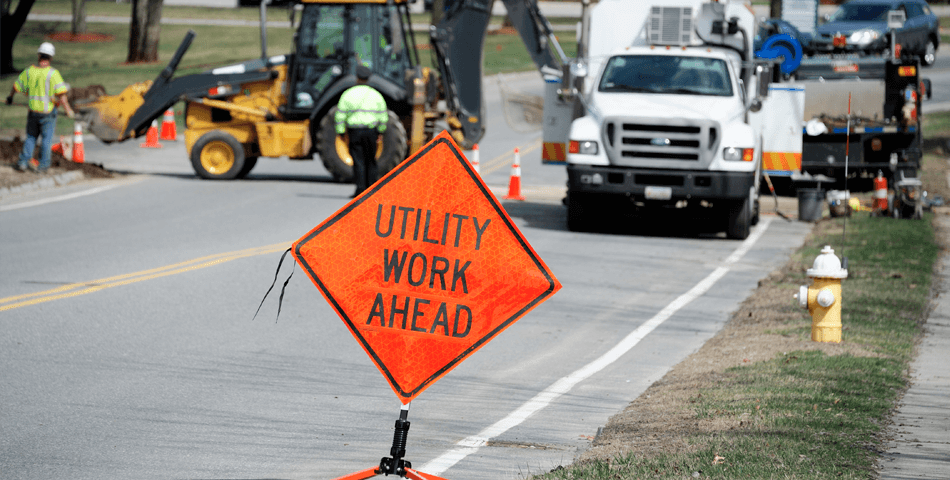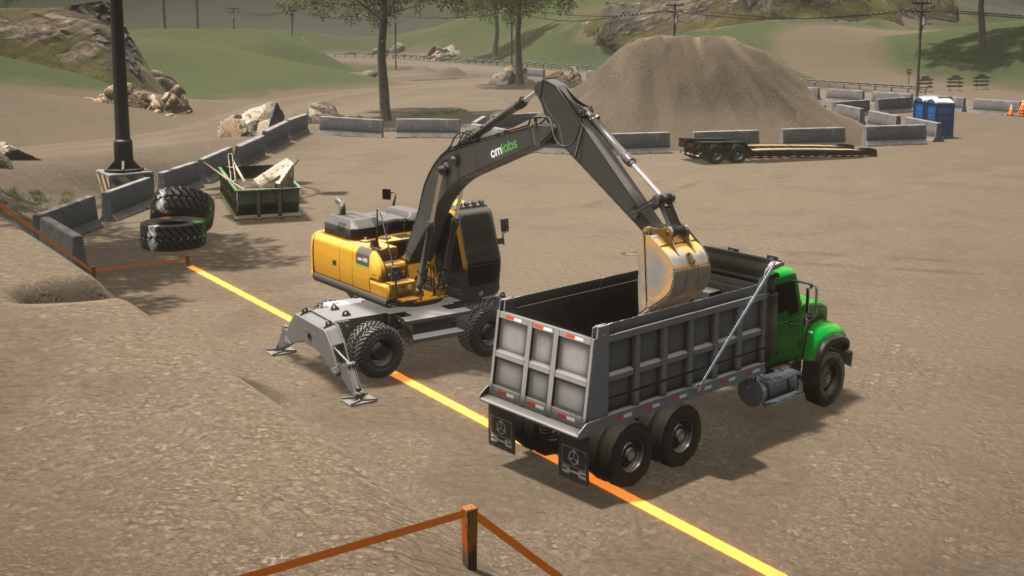Measuring Up: Vortex Crane Simulator Takes the Guesswork Out of Crane Operator Assessment
Success Story Summary
The Organization
NCSG Crane & Heavy Haul Services is the largest majority Canadian-owned crane and heavy haul company in Canada. With over 25 years of service excellence, NCSG provides mobile crane rental and heavy haul services throughout western North America.
The Situation
NCSG sought a reliable solution for crane operator skills assessment and training.
The Solution
The Results
“Assessing crane operator skills has been a matter of a difference of opinion in the past,” says Steve Fryer, with some annoyance. For years, Fryer has relied on a mix of manager reports and opinions to assess the crane operators at NCSG Crane & Heavy Haul Services. It’s the same method that’s used all over the industry, all over the world. And it is not foolproof.
“One guy thinks the guy’s a rock star,” Fryer continues, “and I think he should try a different trade.”
As NCSG’s Manager of Training, these kinds of potential discrepancies in skills assessment drive him nuts.
There’s more at stake than pure principle—according to a study of US construction mishaps over a 30-year period, operator error was the cause of around 85 percent of all crane incidents and fatalities.
“Our highest risk area obviously is going to be cranes,” says Fryer. “It has the highest likelihood that they could kill somebody. Making sure we have the most competent, most skilled people is very important.” But even the most impartial attempts to establish baseline skill levels get bogged down in subjectivity.
“A few years ago,” Fryer says, “I sent out a spreadsheet to all of our managers and supervisors, requesting that everyone rate all of their operators from 1 to 10, with ‘5’ being a guy who’s adequately doing his job, ‘10’ walks on water, ‘1’ can’t find water.”
“When it came back, I was surprised to see just how far apart some people were. You could have one guy rated by five different managers with five completely different scores. It was useless information.”
For over 20 years, Steve Fryer has himself been a crane operator as well as a crane and rigging supervisor. He’s also test-driven his share of crane simulators. He’s often gotten out of the seat feeling underwhelmed.
“I’ve been to these trade shows, and you go from one to the other, you’re going yeah, this is not even close. They don’t have the movement of the chair, they don’t have all the screens, they don’t have the real-feel controls, the real-feel chair… There’s a lot of Mickey Mouse stuff that’s just two joysticks attached to a laptop. The rope dynamics aren’t right. The load dynamics aren’t right. They just don’t feel like a real crane.”
“Very realistic,” says Fryer. “I looked at quite a few simulators, and I didn’t find anything that even came close to Vortex.”
Fryer’s first encounter with Vortex simulators, on the other hand, was a completely different experience. With OEM controls and seating, and lifelike visuals generated by CM Labs’ powerful simulation software, Vortex Simulators have a well-deserved reputation for being among the most realistic simulators in the world. But Fryer was not inclined to issue a purchase order based on reputation alone.
“I’ve run tower cranes,” he says. “So my first thing to do was put it through its paces—push it as hard as I could—and see if it reacted like a real crane.” It took only a few minutes for him to reach a verdict.
“Very realistic,” says Fryer. “I looked at quite a few simulators, and I didn’t find anything that even came close to Vortex.”
Vortex Simulators simulate the real behavior of cranes, rigging, cables, and loads, validated against empirical and engineering data.
They also track and log performance metrics, such as the amount of time elapsed in a training exercise, the amount of fuel used, pendulums, collisions, failure to protect others on the worksite, and more.
Fryer was convinced that the Vortex Simulator met his requirements for both skills training and operator assessment. But he still needed to overcome the skepticism of the NCSG crane operators. “When we first started using it, there was a huge backlash,” he says. “Nobody wanted to get in it. We had to force people to get in it. Because it was ‘ah, it’s just a toy, it’s just a game.”
“But without a doubt, every single person who’s a crane operator who’s ever sat in it goes ‘Wow, we should have had one of these years ago’. It’s not what they expected.”
“With the simulator,” Fryer adds, “when it comes to training apprentices, there’s a real comfort level knowing that I don’t have to worry about him breaking something, or damaging something, or flipping a crane over and killing somebody. My stress level is lower, and his stress level is lower.”
The benefits of the Vortex Simulator go well beyond training, Fryer says. “It’s both a training tool and a decision tool. At the moment, we’re doing a baseline on our employees to find out where their skill sets are at. We record the data that’s coming off the machine itself, plus adding our own anecdotal notes and plugging it into a spreadsheet we’ve developed to determine who our top performers are and the bottom performers are.”
“Then we would go through the bottom performers and find out what skill sets they’re lacking or need to improve in order to bring them up to the median range where the rest of our crane operators are.”
For Steve Fryer, the Vortex Simulator is instrumental in helping NCSG achieve its mission to provide best-in-class personnel to job sites as well as a comprehensive safety program and operational best practices.
“The nice thing about the simulator is that it’s a very objective process, so we can go through and say ‘you’ve been measured.’ This is not my opinion, this is not somebody else’s opinion. You’re all working on a level playing field.
“Before the operators would say, you know, ‘I was working in the snow that day’, or ‘it’s freezing cold’, or ‘it’s windy’. Well now we can level the playing field so it’s exactly the same crane, exactly the same scenario. There is no difference between one person and the next when it comes down to what the criteria for testing are.”
